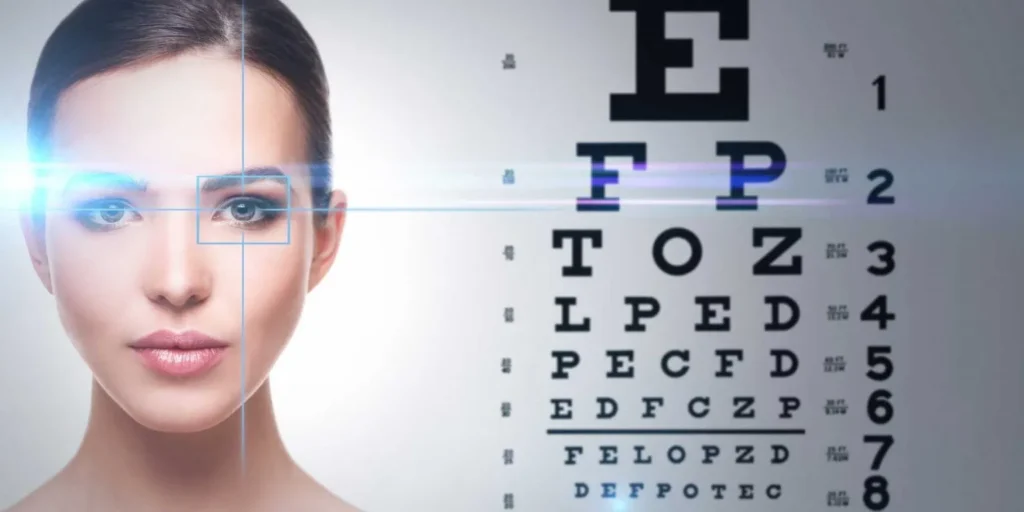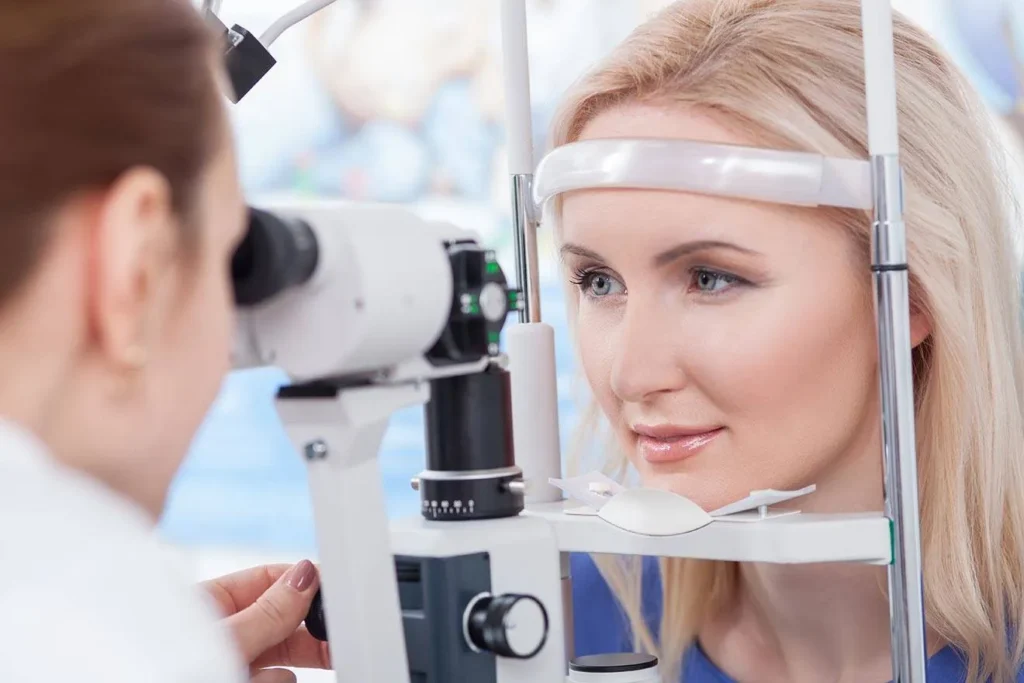Key Points
- 20/20 vision means seeing clearly at 20 feet what should normally be seen at that distance.
- Only about 35% of adults have 20/20 vision without corrective measures.
- Regular eye exams are crucial for detecting and correcting vision issues.
- Protective eyewear, like sunglasses, guards against UV damage and injuries.
- A healthy diet and limiting screen time can support eye health.
- Corrective options include glasses, contacts, or surgery for those without natural 20/20 vision.
- Maintaining 20/20 vision requires ongoing care, including proper use of corrective eyewear and lifestyle habits that support eye health.
What Does 20/20 Vision Mean?
20/20 vision is a term used to express normal visual acuity measured at a distance of 20 feet. If you have 20/20 vision, you can see what an average individual can see on an eye chart when standing 20 feet away. It’s the standard of optimal eye health but also a baseline, not necessarily a pinnacle of perfect vision.
Is 20/20 Vision Good?
Absolutely! Having 20/20 vision means you have a sharp, clear vision for most day-to-day activities. However, it doesn’t signify superior vision quality, as it only measures visual acuity. Other factors, like peripheral awareness, eye coordination, depth perception, and focusing ability, also contribute to your overall visual health.
Benefits of 20/20 Vision

This level of visual acuity can profoundly impact various aspects of life, enhancing overall quality and efficiency. Here are some of the key benefits:
Enhanced Learning and Reading Abilities
Clear vision allows for better reading comprehension and speed, as you can see and process information without strain. Students with 20/20 vision often find it easier to read whiteboards, textbooks, computers, etc.
Less Eye Strain
Working on computers or detailed tasks is easier on the eyes, reducing fatigue and potentially increasing productivity. Clear vision makes focusing on tasks more effortless, allowing for higher quality work and efficiency.
Reduced Risk of Accidents
20/20 Vision is beneficial for activities like driving, where being able to see road signs and potential hazards clearly can prevent accidents.
Enhanced Sports Performance
Many sports rely on good vision for coordination, timing, and accuracy, making 20/20 vision a significant advantage.
Is 20/10 Vision better than 20/20 Vision? Find out now.
How Rare is 20/20 Vision?
20/20 vision is not as common as you might think. 20/20 vision without the use of eyeglasses or contact lenses is less common than many might think. It’s estimated that only about 35% of adults in the US have 20/20 vision naturally. Factors like genetics, age, and lifestyle choices can affect your vision quality.
20/20 Vision Test
20/20 vision tests primarily involve reading letters off a Snellen chart, where you cover one eye at a time and then read with both eyes. Your eye care provider measures your visual acuity in each eye to determine how close or far you are from 20/20 vision. It provides crucial information about your sight and any necessary prescription to correct it.
How To Achieve 20/20 Vision?

Achieving 20/20 vision involves a combination of professional eye care, lifestyle adjustments, and possibly corrective measures. Key strategies include:
Regular Eye Exams
Early detection of vision issues through comprehensive eye exams.
Protective Eyewear
Using sunglasses and safety glasses protects the eyes from harmful UV rays and injuries.
Healthy Lifestyle
A diet rich in vitamins and omega-3 fatty acids supports eye health. Limiting screen time also reduces eye strain.
Corrective Measures
For many, achieving 20/20 vision requires glasses, contact lenses, or refractive surgery such as LASIK.
Eye Exercises
While not universally endorsed, some advocate for specific exercises to improve vision clarity.
Is 20/200 Vision legally blind? Read about this on any of the healthcare blogs in USA.
Is 20/20 Vision The Best?
While 20/20 vision is a benchmark for normal visual acuity, some people have vision sharper than the norm. However, achieving and maintaining good eye health encompasses more than just acuity, including all aspects of visual function and eye health.
20/20 Vision Example
Imagine being able to read road signs clearly while driving or easily seeing the leaves on a tree from a distance. That’s the clarity 20/20 vision offers, making daily tasks more manageable and enjoyable.
Maintaining 20/20 vision
If you’re blessed with 20/20 vision or have achieved it through corrective measures, maintaining it involves:
- Continuing Regular Eye Check-ups
- Practicing Good Screen Hygiene
- Staying Healthy Overall
Conclusion
20/20 vision is vital to our overall health and well-being, impacting daily activities, safety, and quality of life. By understanding what 20/20 vision entails and taking proactive steps towards achieving and maintaining it, we can ensure our eyes stay healthy for years to come. Remember, the key to good vision is not just seeing well but ensuring our eyes are well-cared for.
Discover the genetic factors behind Honey Colored Eyes in this guide.
FAQs
How To Know If You Have 20/20 Vision?
To determine if you have 20/20 vision, you need a visual acuity test performed by an eye care professional, typically involving reading letters from a Snellen chart.
Is 20/20 Vision Normal?
Yes, 20/20 vision is considered normal visual acuity, meaning you can see what an average person can see on an eye chart from 20 feet away.




